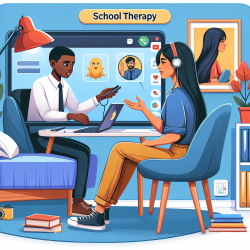Introduction
As practitioners dedicated to improving outcomes for children, we often seek evidence-based strategies to support the mental health of vulnerable populations. A recent study titled The moderating effect of physical activity on the relationship between bullying and mental health among sexual and gender minority youth offers critical insights. This research highlights the complex interplay between bullying, physical activity (PA), and mental health among sexual and gender minority (SGM) youth. By understanding these dynamics, practitioners can better tailor interventions to enhance mental health outcomes for LGBTQ youth.
Key Findings
The study conducted by Kirklewski, Watson, and Lauckner (2021) analyzed data from the LGBTQ National Teen Survey, focusing on the impact of bullying and PA on depression and self-esteem. Key findings include:
- Bullying based on sexual and gender identity is positively associated with depression and negatively associated with self-esteem.
- PA is associated with better mental health outcomes, but its benefits are more pronounced in non-bullied SGM youth.
- Addressing bullying history is crucial for the effectiveness of PA interventions aimed at improving mental health among SGM youth.
Implications for Practitioners
These findings suggest several actionable strategies for practitioners working with SGM youth:
- Assess Bullying History: Before implementing PA interventions, evaluate the bullying history of SGM youth. Understanding their experiences can help tailor interventions that address their specific needs.
- Integrate Mental Health Support: Combine PA programs with mental health support to address the underlying issues related to bullying. This integrated approach can enhance the effectiveness of interventions.
- Create Safe Environments: Foster inclusive and supportive environments in schools and community settings where SGM youth can engage in PA without fear of bullying or discrimination.
- Advocate for Anti-Bullying Policies: Support the implementation of comprehensive anti-bullying policies in schools to create safer spaces for SGM youth.
Encouraging Further Research
While this study provides valuable insights, further research is needed to explore the nuances of PA's impact on bullied SGM youth. Practitioners are encouraged to contribute to this body of knowledge by investigating:
- The long-term effects of PA interventions on mental health in bullied SGM youth.
- The role of different types of PA (e.g., team sports vs. individual activities) in mitigating the effects of bullying.
- The impact of school and community support systems on the mental health outcomes of SGM youth.
Conclusion
For practitioners dedicated to improving the mental health of SGM youth, this study underscores the importance of considering bullying history when designing PA interventions. By integrating mental health support and fostering inclusive environments, we can enhance the effectiveness of these interventions and contribute to better mental health outcomes for this vulnerable population.
To read the original research paper, please follow this link: The moderating effect of physical activity on the relationship between bullying and mental health among sexual and gender minority youth.










